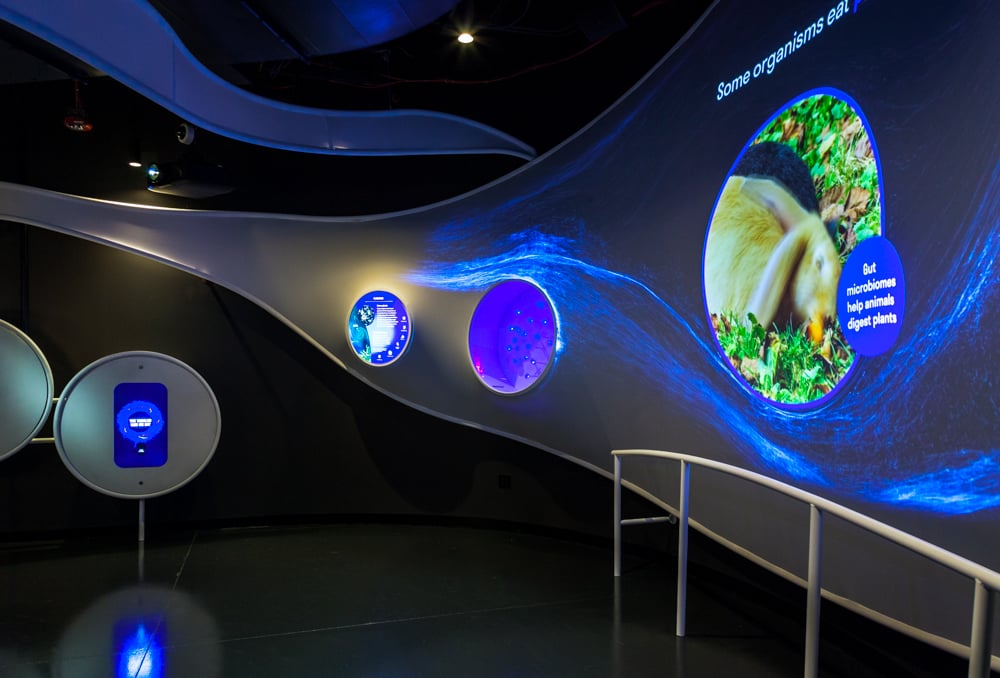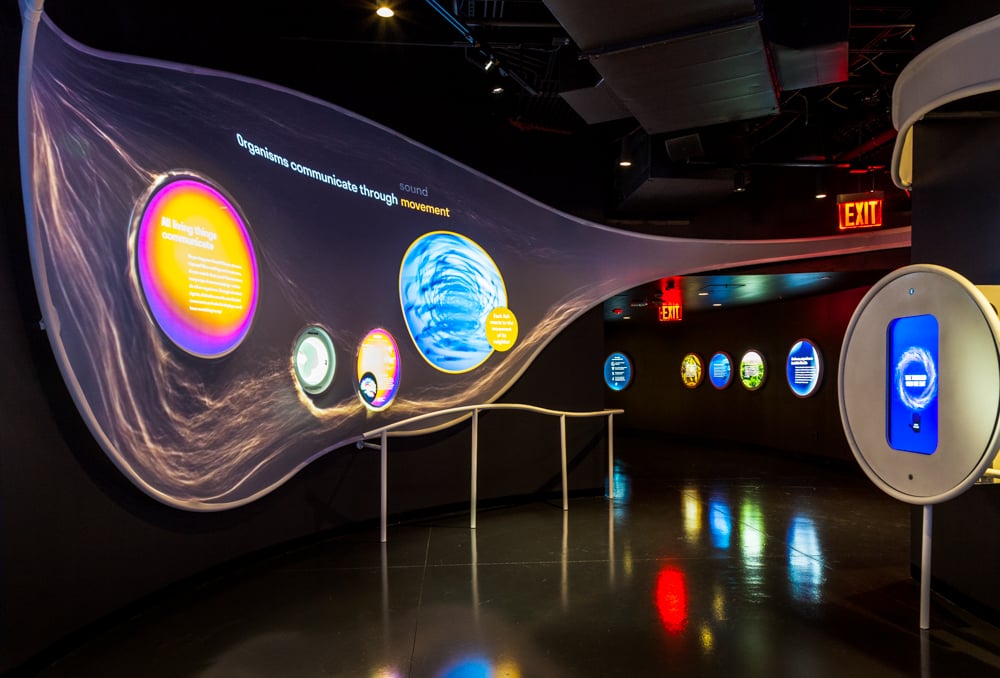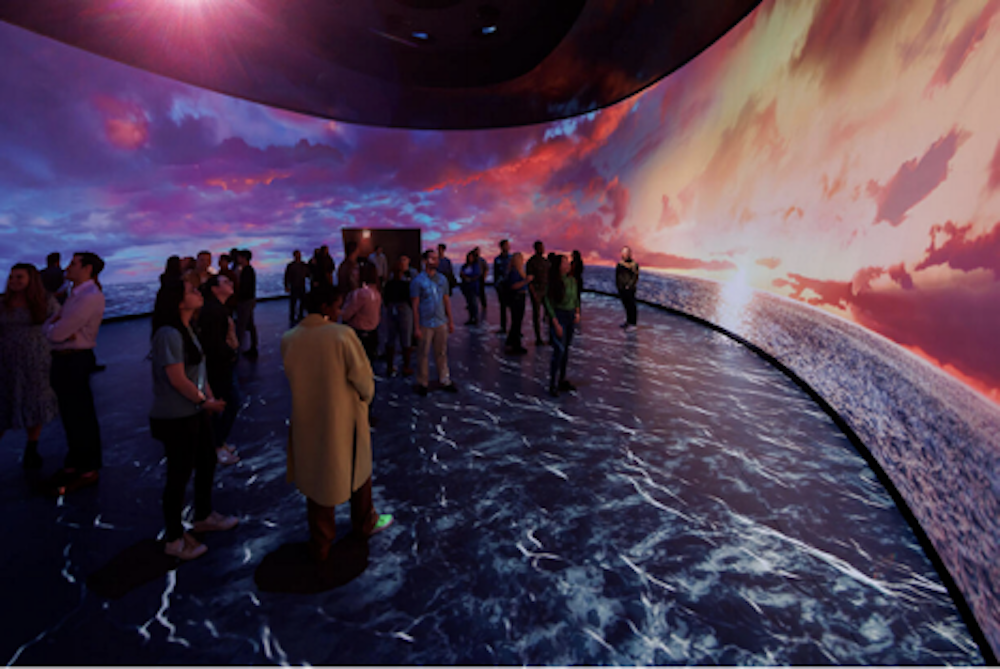
|
This 250 foot long ribbon leads visitors through the Susan S. and Kenneth L. Wallach Gallery, which serves as the pre-show room for the Invisible Worlds immersive interactive experience. How does the American Museum of Natural History give visitors to Invisible Worlds the best possible immersive experience? An important element is the “pre-show” room, formally known as the Susan S. and Kenneth L. Wallach Gallery. The pre-show room acts as a buffer to crowds entering Invisible Worlds; people slow down, quiet down, and their eyes adjust to a darkened environment. |

Designed by the museum's in-house exhibition team in collaboration with Transformit, the ribbon was detailed, engineered, fabricated and installed by Transformit.
In earlier times, such rooms were mostly holding tanks, preventing entry before the previous group had left. In this room, a 250 foot long white fabric ribbon, all of which can be projected upon, winds its way from the lobby, through several turns, to the entry of Invisible Worlds.
The museum’s exhibition designers made the most of the ribbon’s affection for light with beautiful informative projections, putting context to the immersive experience ahead. The Invisible Worlds immersive experience lasts only twelve minutes, but one can happily spend an hour in the pre-show room.

Circular images are used throughout. Some are projected, while for others, a circular cutout ring is mounted into the fabric, and a circular lightbox is placed behind it.
The ribbon is constructed of fabric stretched over a white aluminum frame, which is mounted to the curved walls that control traffic through the room.

The projections are constantly changing content, or flowing through and around the circular images. Interaction points are shaped like cell phones.
During fabrication, the entire structure was pre-mounted in our shop, using a subframe that mimics the walls. The subframe was custom built to match a digital 3d-scan of the room. The ribbon makes numerous twists, turns and changes of width in its journey through the room.
The Invisible Worlds space, empty of people, video and sound. Click the photo to go to the museum's Invisible Worlds website.
More about the Invisible Worlds exhibit: The room is elliptical in shape, and slightly larger at the top. It is made from dark grey projection fabric, stretched so tightly that it feels like a solid wall.
Invisible Worlds, in action. Photo by Iwan Baan Click photo to see the Invisible Worlds trailer.
Very powerful projectors mounted above show seamlessly joined moving images on every surface in the room, including people and the floor. (The power is needed to overcome the dark grey fabric's tendency to absorb light!)


